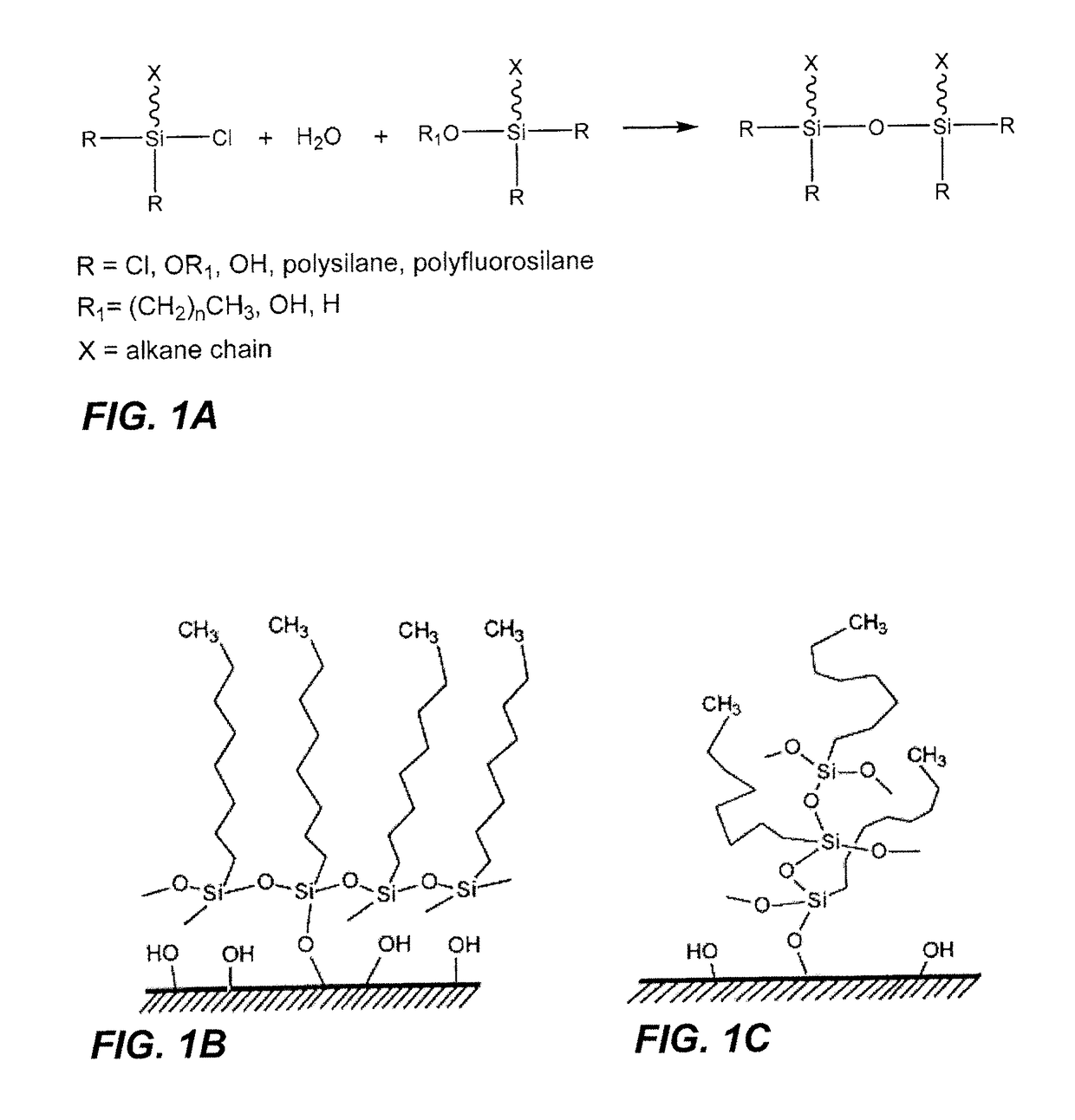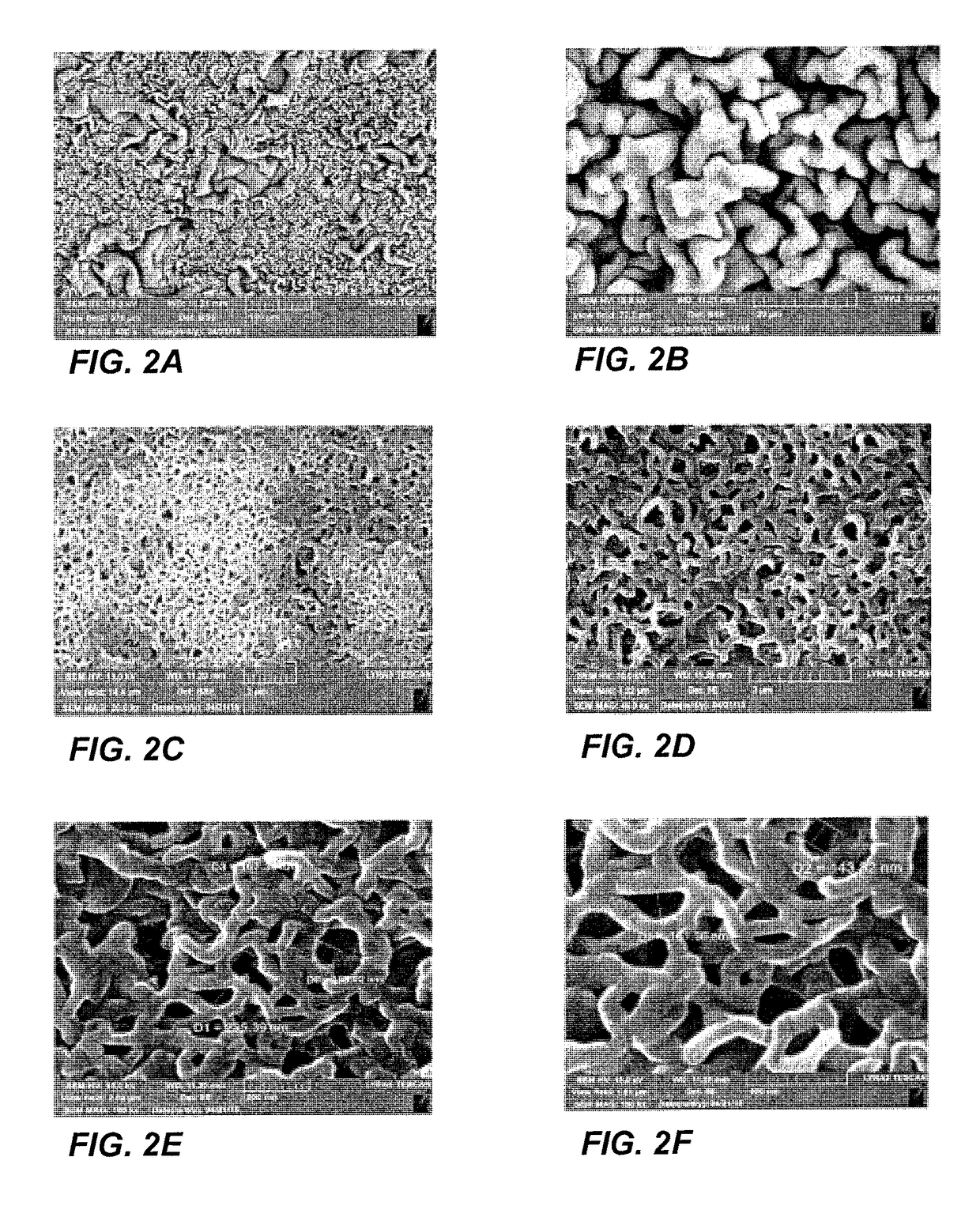Superhydrophobic and self-cleaning substrate and a method of coating
a technology of superhydrophobic and self-cleaning substrates, applied in the direction of liquid surface applicators, pretreated surfaces, coatings, etc., can solve the problems of reducing their feasibility, affecting the practicality of the application, so as to achieve the effect of reducing the cost of the application
- Summary
- Abstract
- Description
- Claims
- Application Information
AI Technical Summary
Benefits of technology
Problems solved by technology
Method used
Image
Examples
example
Materials
[0076]Octadecyltrichlorosilane (ODTS) (>98%, Sigma Aldrich, USA), and hexane (anhydrous, 99%, Sigma Aldrich, USA), and all chemicals were used without any further purification. The ODTS was placed on substrates made of glass micro-slides and plastic holders with removable caps, which were purchased from Somatco Inc., Saudi Arabia.
[0077]Prior to coating, the glass micro-slides and plastic holder substrates were subjected to oxygen plasma treatment to remove any organic contamination present on the surface. The samples were placed inside an Oxygen Plasma Cleaner (Harrick Plasma, Ithaca, N.Y.) and the chamber evacuated with the help of a vacuum pump. After generation of sufficient vacuum (˜100 mbar), the plasma was switched on for a period of 2 to 3 minutes. Immediately after, the specimens were removed and immersed in DI water to hydroxylate the surface. The presence of hydroxyl groups on the surface serve as binding sites for the silane to be deposited su...
PUM
 Login to View More
Login to View More Abstract
Description
Claims
Application Information
 Login to View More
Login to View More - R&D
- Intellectual Property
- Life Sciences
- Materials
- Tech Scout
- Unparalleled Data Quality
- Higher Quality Content
- 60% Fewer Hallucinations
Browse by: Latest US Patents, China's latest patents, Technical Efficacy Thesaurus, Application Domain, Technology Topic, Popular Technical Reports.
© 2025 PatSnap. All rights reserved.Legal|Privacy policy|Modern Slavery Act Transparency Statement|Sitemap|About US| Contact US: help@patsnap.com



